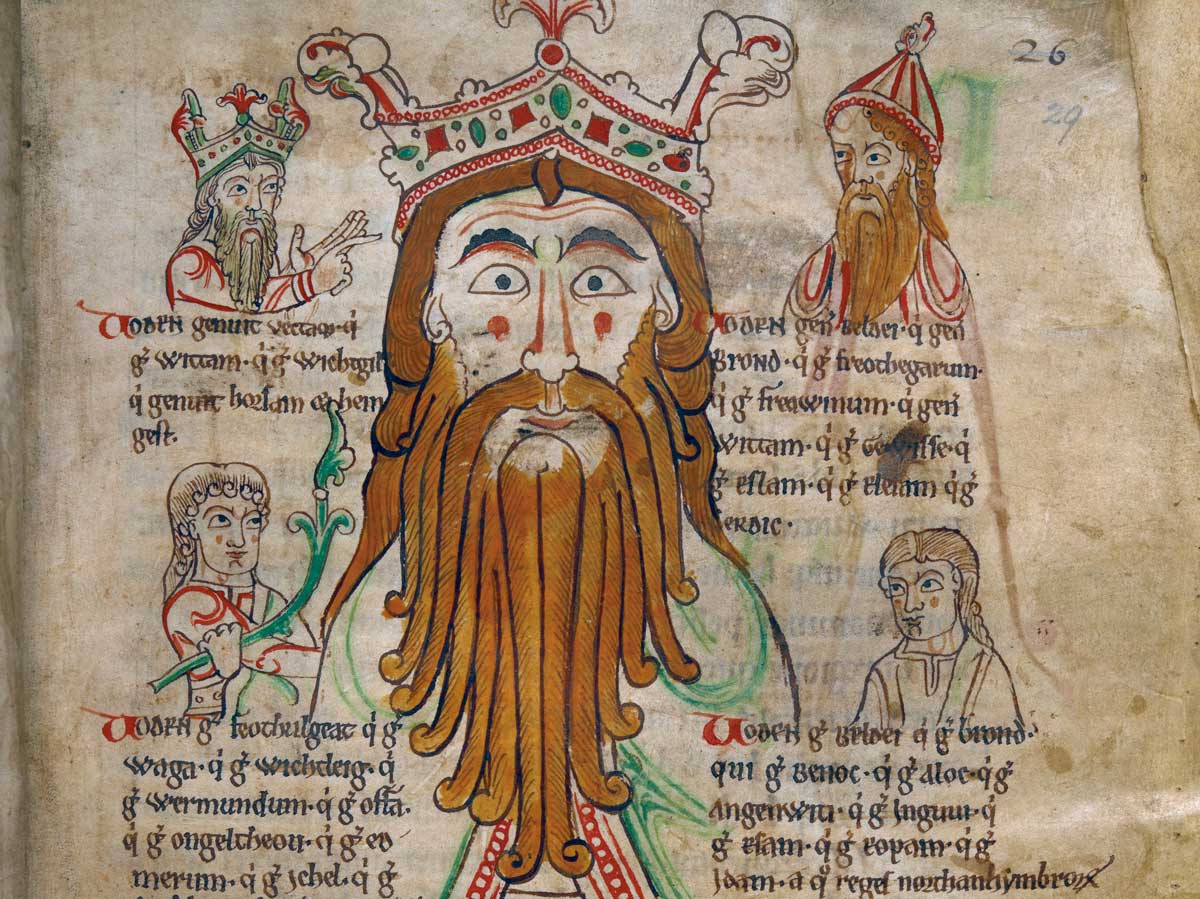Here Be Monsters
In Anglo-Saxon England a hill could be a dragon’s lair and a ditch the home of gods.

Anglo-Saxon literature, in both Latin and Old English, chiefly preserves the beliefs and learning of the cultural elite. We have comparatively little knowledge of how the illiterate majority who worked the land interpreted the world around them. However, an often-overlooked source of folklore and popular belief comes from the corpus of Anglo-Saxon charters and place-names. Both preserve shreds of popular belief and, though the reasons for many names are lost to us, these sources offer a tantalising glimpse into how ordinary people experienced their surroundings.
Anglo-Saxon charters are legal documents transferring land and privileges from one person or organisation to another. Over 1,000 charters survive and they date from the last quarter of the seventh century until the Norman Conquest. In common with place-names, many of which we still use today, in outlining the specific bounds of a piece of land charters preserve the local name for all manner of landscape features, from hills and woods to small pits and even individual bushes.
Early charters are written largely in Latin, but bilingual charters were common by the tenth century. Bilingual charters typically use Latin for the administrative parts of the document, such as the grant itself and its witnessing, but switch to Old English when describing the exact boundaries of the land in question. Old English boundary descriptions can be incredibly specific and detailed. A grant of land at Crediton, Devon, for example, describes the land’s extent ‘from the sour apple tree to the green way; from the green way to the wolf-pit ... from Swine Combe to Egesa’s Tree’. The historian Nicholas Howe plausibly suggested that charters used Old English for elucidating the landscape because Latin was simply insufficient for describing topography named by the people who lived there in their native tongue.
Place-names and charters thus give us a microcosmic view of the world as experienced by an Anglo-Saxon travelling on foot. Describing an area of land as it appeared to ordinary people and using their vernacular thus preserves something of their beliefs about the world around them. Most place-names have Old English roots and so can be consulted for the same purposes. The picture we get, from a broad sample of the place-name and charter corpus, is of a world inhabited by monsters and supernatural beings.
Many landscape features have a common, monstrous inhabitant. A grant of 946 makes reference to a drakenhorde (‘dragon’s hoard’), presumably a barrow, since we know from Old English poetry that dragons were thought to inhabit prehistoric burial mounds and guard the treasure therein. Place-names, such as Drakelow (draca+hlæw, ‘Dragon’s Tumulus’) in Derbyshire, record the same belief. Other man-made earthen structures are frequently ascribed to Woden. A charter of 933 mentions a wodnes dic (‘Woden’s Ditch’) and numerous linear earthworks still go by the name of ‘Grim’s Ditch/Dyke’, using Woden’s sobriquet, Grim (‘the masked one’) – not to be confused with the Norseman Grimr, who gave his name to Grimsby.
Other place-names and landmarks in charters have a broader range of residents. Water has various supernatural associations, such as the pucan wylle (‘Goblin’s Well’) from a charter of 946 and Tusmore (þyrs+mere, ‘Giant’s Mere’) in Oxfordshire. In several charters, the notorious Grendel lives in a mere as he does in Beowulf, which suggests he had a place in popular folklore: grendles mere and grendlesmere, for example. Elsewhere, other gods, elves and demons inhabit the land.
These names are all rare survivals and their exact significance is usually lost to us. While the dragon and barrow belief is explicated elsewhere, it is impossible to know why certain earthworks were associated with Woden. But it is likely that all the supernatural names refer to myths and legends, as one survival from 955 demonstrates. This Berkshire charter includes Welandes smiððan (‘Wayland’s Smithy’) in its bounds, a prehistoric chamber tomb that still exists today under the same name, so-called because of its resemblance to the legendary blacksmith’s forge.
For reasons largely lost to us, certain landscape features were commonly (though not exclusively) named with reference to specific gods, monsters or supernatural beings. The Woden names are especially interesting in this regard, for even post-Roman structures, such as the Wansdyke running through the West Country, were ascribed to him, though their date means the Anglo-Saxons would probably have known their origin. This suggests that, beyond mere superstition, local toponyms had a specific function.
The Anglo-Saxons were not cartographers: they did not produce regional maps and only one world map survives from the period. Logically, there must have been an alternative system of mapping the world in order to pass through it without getting lost, and these names are probably one of the means by which they achieved this.
An interesting name is easier to remember and differentiates a landmark from its surroundings. Naming a landscape feature after a monster or with reference to a legend appeals to common knowledge and condenses all manner of specific features into no more than a couple of words. Presumably, telling someone to follow the course of Woden’s Dyke would allow them to identify the landmark indicated better than if one simply told them to look out for a large embankment. Something about these places must have earned them their local name and no doubt there was a physical difference between a barrow occupied by a dragon and one haunted by demons. The utility of such a system may be, in part, why the Anglo-Saxons did not excel in cartography.
Charters and place-names, then, not only allow us to see how ordinary Anglo-Saxons interacted imaginatively with the world around them but even how they mapped it. Monsters and supernatural beings were key to both purposes. Thus to understand the Anglo-Saxon world, however imperfectly, we must be aware of Woden, Grendel and their neighbours.
Tim Flight is the author of Basilisks and Beowulf (Reaktion, forthcoming).